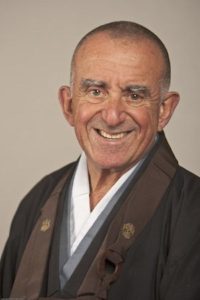The Meaning of Nice

The Abbot’s Letter
March 2021
“The Meaning of Nice”
On a warm Indian Summer evening, in a popular Eastside Manhattan steak house somewhere in the mid 50’s, I was in youthful high spirits. My father had brought me along to dinner with friends and business associates, men who were jovial, confident, and full of good humor. They enjoyed being with my Dad and with each other. And, I was getting a lot of attention.
Shortly after cocktails arrived, one of my father’s friends asked me:
So, young man, what are you going to be when you grow up?
I answered:
Nice.
He then said:
No, I mean don’t you want to be a doctor or a lawyer or an engineer or an architect or a businessman like your father?
No answer came. I sat in silence, gazing at the bubbles rising in my ginger ale, too young to imagine what it might be like to work in any of the professions he suggested. But I did know what “nice” felt like. I was eight or nine at the time.
New York is infamous for its crowds and busyness. People often bump into each other or get in each other’s way. Subways and buses do not have orderly queues; instead, there is pushing and shoving to get on, before exiting passengers can get off. The resulting bottleneck lasts less than a few seconds, with no flow in either direction. Yet in that brief time, the results can be friction, anger and tension.
New Yorkers are also polite and considerate. I often heard “Pardon me,” “Good morning,” “Please go ahead.” When politeness was expressed, I felt the world ebb and flow with a natural rhythm, without conflict, relaxed.
“Nice” has a universal meaning that extends beyond everyday politeness and courtesy. These social conventions are needed to sustain a congenial community or society. But, they are limited in reach and touch, reaching only the surface of relationships. Our practice asks us to take “nice” to the higher level, to make it inclusive, beyond casual meetings, to expand our motive from courtesy to empathy and taking care.
Buddhism encourages us to orient our life toward eliminating worldly suffering. We start with being attentive to how we relate with each other, to what is in front of us, to remaining present in the immediate moment. In our practice, relieving suffering – in ways large and small – is continuous, it is not an activity we turn “on” like a light switch only when obviously needed, forgetting about it when suffering does not seem apparent. It is an attitude that continues without a break.
In Zen practice, the emphasis on taking care of ordinary activities is illustrated by the following story told in “A Sense of Something Greater”:
Two monks are on pilgrimage, traveling from temple to temple, visiting and studying with well-known teachers to expand their practice and understanding. Walking beside a creek, they approach a well-known monastery. A vegetable leaf appears, floating downstream. The monks pause in dismay, and prepare to turn around and retrace their steps. Suddenly another monk comes out of a side door, running toward the creek with a long pole. He stops at the edge of the water, reaching out to retrieve the truant leaf. The two monks smile and quickly resume their journey to the temple.
The foundation of spiritual practice is a commitment to creating a world permeated by “nice,” what Suzuki-roshi meant when he referred to our “inmost desire.” The world of “nice” is a world of no separation, a world of caring and flowing. Kannon Do has a long tradition of creating such an environment.
More than twenty years ago, a member of Kannon Do submitted the following poem to an early version of the Kannon Do newsletter:
Those who flow as life flows
Need no other force
They feel neither wear nor tear
May I flow like
Silk thread on a sharp needle
Through soft cloth
In today’s atmosphere of unimagined challenges, let’s continue our practice of “nice” wherever we are.
Les Kaye
Abbot of Kannon Do


